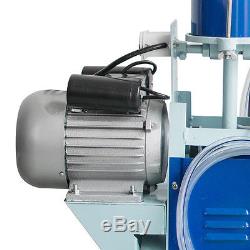These fungi also produce symbiotic relationships with particular plant species to execute that exchange of nutrients. Mycorrhizae have now been found to have powerful good influence on plant growth, deliver, and vigor. Another well-understood symbiosis is with flowers and rhizobia.
Rhizobia are bacterial organisms in charge of nitrogen fixation in soils. These bacteria convert nitrogen gasoline in to a functional kind of natural nitroge n for other organisms. Rhizobia variety nodules on seed roots, which include Rhizobium bacteriods. This really is where nitrogen fixation takes place.
n for other organisms. Rhizobia variety nodules on seed roots, which include Rhizobium bacteriods. This really is where nitrogen fixation takes place.
Nitrogen fixation is an incredibly power and source intensive process for people and yet these bacteria get it done for a few sugar molecules. Accessible nitrogen is frequently a major restraining factor in agriculture procedures where climate and water are in adequate quality and quantity. This is actually the largest benefit and it’s effectively learned and established. Nevertheless, there are more benefits when an entire microbial community is done and allowed to thrive.
Maintaining a healthier citizenry of land microbes allows organic substance to carry on through the whole recycling method developing a reservoir of nutrients. These vitamins are slowly released by decomposing microorganisms and fungi (previously killed by fungicides) within the soil. Other land organisms can transfer major metals to the seed, which is often important for usual plant development or land remediation. Introducing SOM to a land offers the necessary things for a wholesome microbial community.
With SOM, microbes can break down large contaminants into smaller, soluble types necessary for seed absorption. SOM also provides carbon to the soil. This increases the soil framework in addition to encourages the development of extra microbes. A earth with high SOM features a balanced microbial community, which then aids the plants in the uptake of various nutrients.
Today’s draht increasingly count on inputs of fertilizer and farmicides and however, these inputs are becoming more costly and are needed in larger doses. Employing land microbes to enhance nutrient performance in the area won’t just minimize production prices, but will create healthy plants and a healthy crop. These microbes have the capability to search for particular vitamins required during various place development stages.
Providing the best amount of nutrients at the appropriate time enables the seed develop quickly while however sustaining a healthy, normal vigor. Crops can develop extremely fast when given a higher nitrogen fertilizer. But a higher nitrogen environment can stop the usage of other nutrients, weakening the seed overall. The plant can not maintain their defenses in this quick growth and therefore farmicides are applied.
Using large nitrogen fertilizers also changes the pH of the soil. This also influences the crops’power to occupy a balanced way to obtain nutrients. Thankfully there’s a solution. A healthier populace of microbes can resolve that problem.
As earth normal matter (SOM) and microbe populations start to boost in certain soil, the pH of that earth may slowly equilibrate to about 6.5. That is substantial because a land with a pH of 6.5 – 7 provides perfect nutrient access for the plant. Coincidently, that is also the optimum pH for soil microbial activity.
And so the microbes (and the farmer) have twice the incentive to harmony earth pH. The microbes do it as it encourages plant growth. Strong and balanced flowers offer plenty of food for the microbes. As many of these changes begin to fall under position, natural disease reduction increases and pests no further become a key issue.
After the farmer has quit farmicide purposes, valuable microbes not only invade the soil, but also aerial portions of the plant as well. Study indicates that healthy flowers may have at the least 60% of these leaf place included in fungi and bacteria! These microbes produce a physical and substance buffer on the leaf the same way land microbes do.
